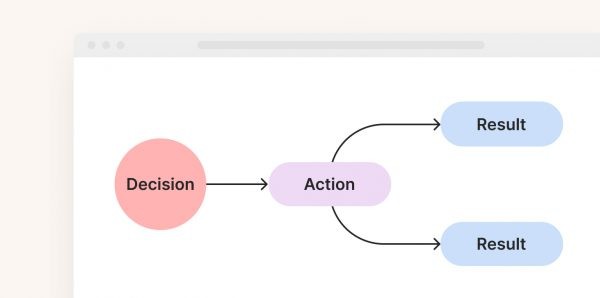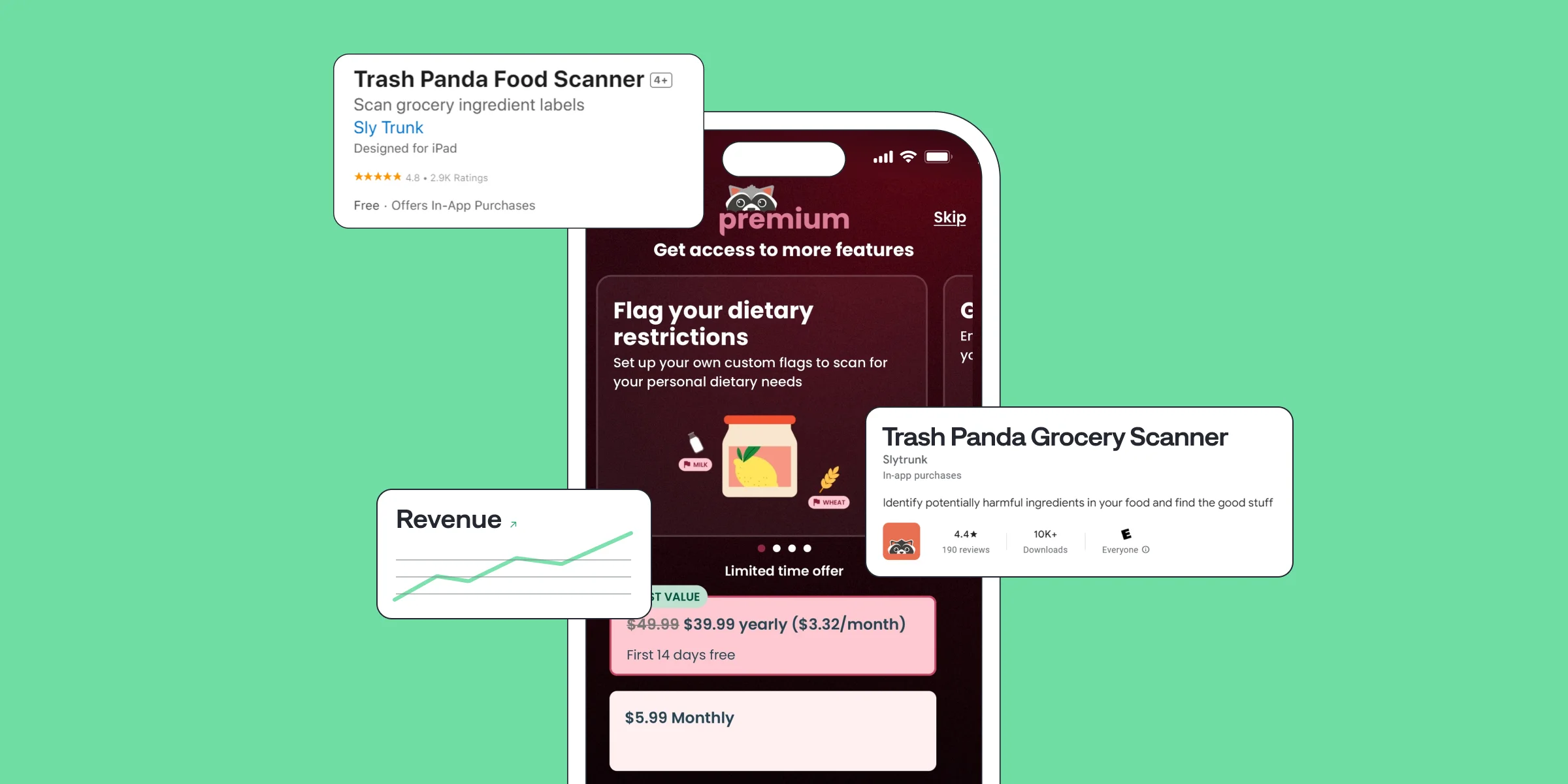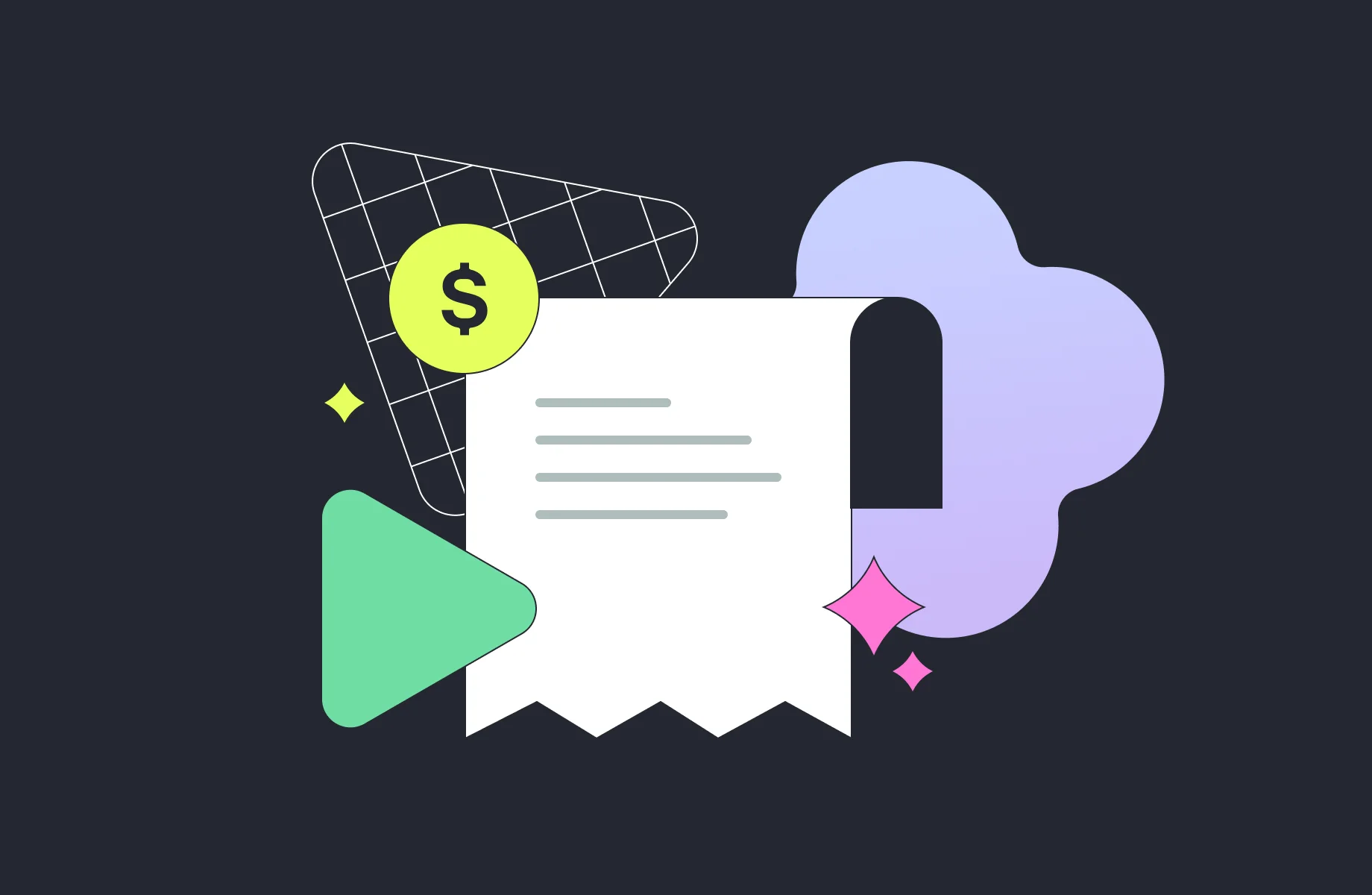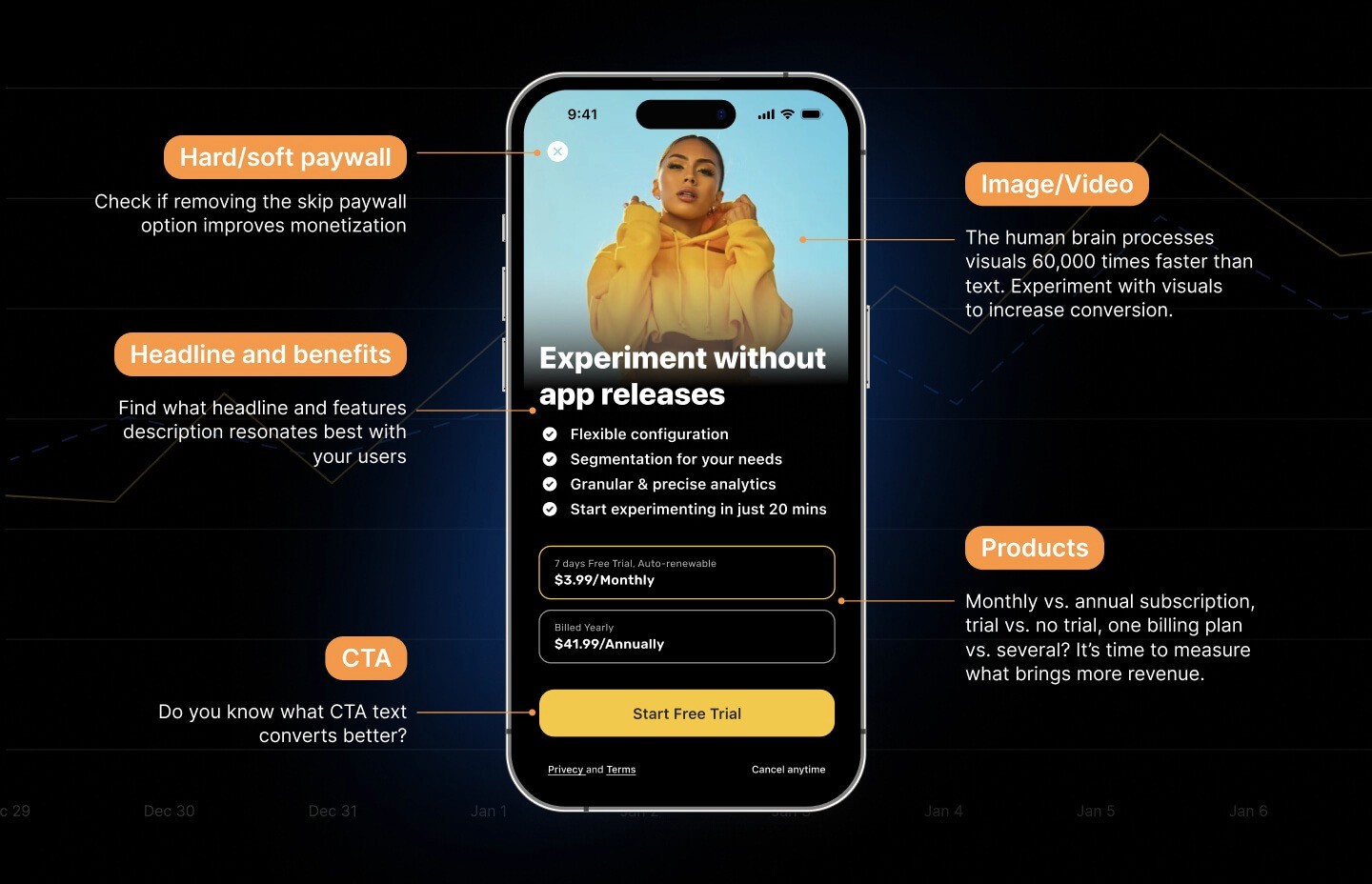Summary
Regardless of the category of your subscription-based app, every user you have is unique in their own way. Understanding this difference can be highly beneficial, as it allows you to launch more effective marketing campaigns and maximize your ROAS.
So, how can this be achieved? Well, everything starts with analytics-based mobile app user segmentation. That’s precisely what we’ll discuss today. We’ll take a look at important metrics that you should track, common segmentation types, and ways of dividing up your user base for optimal app marketing strategy development. Let’s dive in.

Most Common Types of Customer Segmentation
Data-Driven Customer Segmentation
Before you can get started with segmentation, it’s imperative to track and analyze some of the most important subscription mobile app metrics. The idea is quite simple: by analyzing each subscription event and user group within your app and how they impact your Revenue and LTV, you’ll get an understanding of where to focus your segmentation efforts and which campaigns you should launch for each audience.
So, prior to segmenting your user base, make sure your analytics platform is keeping tabs on:
Install-to-paid conversions
Trial-to-paid conversions
Revenue by subscription event
Retention rate (cohort analysis)
Acquisition source (marketing attribution)
ARPU
LTV
Of course, there are plenty of other metrics that you should monitor to ensure the overall wellbeing of your business; however, these are definite must-haves if you want to make the most of mobile app user segmentation.
In particular, you should pay special attention to the LTV benchmark. This tells you how much revenue a single subscriber delivers over the course of using your solution. You should be interested in maximizing this number as it directly translates into a revenue boost for your business.
However, since different user cohorts express different behaviors, you should test different ways of optimizing LTV for each one of them. This starts with accurately separating your customers into groups based on specific characteristics. Let’s take a closer look at how that can be done.
How to Segment Your App’s User Base
In this section, we’re going to look at some of the best approaches for subscription mobile apps in particular.
1. Acquisition
Segmenting your users based on acquisition source means differentiating between organically obtained users and those that came to you through an advertisement. This approach is important because people who have downloaded your application from an ad likely have existing ideas about it due to the messaging they may have seen. Thus, their in-app experience might be different than that of someone who found your tool when searching for a competitor.
For example, if you’re in the gaming sector, an organically acquired user may know very little about your app and will thus require some in-depth onboarding to start enjoying everything you have to offer. On the other hand, a player who’s been obtained through a playable ad probably doesn’t need a heavy run through and may actually get annoyed if offered one.
So, if you choose to split your users based on how they were acquired, it might be a good idea to create unique onboarding experiences for each segment. Of course, you’ll still have to test out various approaches, but at the end of the day you might just find the right one that boosts your revenue.
At Qonversion, we understand the importance of tracking acquisition sources for your users. That’s why we offer powerful integrations with attribution partners like AppsFlyer or Adjust to help you stay on top of these types of analytics and improve your campaigns.
2. Country
Geographic segmentation is one of the most common segmentation methods. As the name suggests, this option divides the users according to their location.
Our advice here is to start with dividing LTV and Revenue up by country. As you’ll see, this can significantly differ between countries, so it doesn’t make much sense to launch the same acquisition campaigns across the globe. For instance, LTV and retention rates could be less in Germany than in the US, while in the UK they are higher.
Knowing the exact numbers helps you to set up user acquisition campaigns smart and gives you an understanding of which countries should receive more of your marketing budget, and where you need to experiment more.

Qonversion cohort analysis by country (sample)
3. Product
Track LTV, retention rate, and trial-to-paid customers per product. Most likely you’ll see a difference in user behavior for each segment and get signalled to improve your user onboarding or how you engage with your users.
For instance, if you see significant activity after the trial for a specific product, think about the customization of your app during the onboarding experience so that the end user gets the best user experience during his free period. A great tip is to track factors that typically precede unsubscription for each product – this will give you an understanding of when and how to communicate with your customers. If certain users have been inactive for a while, perhaps it’s time to send a push notification that might re-engage them and highlight the value of your app.
Identify which post-installation events for each of your products tend to lead to the highest trial-to-subscription conversions and adapt your strategies to reflect that. For example, if you have a photo editing application and statistics show that many users convert after testing a certain filter, then ensure that this filter is well displayed within the app and prompt users to try it out.
4. User type: new subscribers vs. subscription renewals
Another great way for app marketers and developers to split up their customers is according to user type: new subscribers vs. subscription renewals. These two groups have different needs and thus different engagement options. While you want to get new arrivals to convert into paying subscribers, you also want to keep loyal users happy and get them to spread the word about your app’s value.
A good approach here is to separately track your revenue from subscription renewals and revenue from new subscribers. You can do this manually or using Qonversion Sales dashboard, where you can use filter revenue between newcomers and renewed subscribers.

Qonversion Revenue event filter (sample)
As you get your numbers, you’ll be able to optimize your strategies.
For new arrivals, make sure you:
Onboard them thoroughly
Send a welcome offer to prompt engagement
Provide easy access to your most in-demand functions
A/B test your paywalls to see which work best for conversion
Advertise exclusive paid features to encourage purchases
The strategy for your renewed customer segment, however, should differ. For those users that open your app frequently, have a high session length, and have been with you for a while, consider:
Developing a loyalty program that keeps them interested in staying subscribed
Thanking them for their commitment and contribution to your growth
Offering incentives to spread the word about your app and invite their friends
Asking them for reviews and ratings on app stores (just don’t overdo it)
As you can see, the two segments require slightly different strategies, so don’t forget to differentiate between new arrivals and loyal customers when coming up with your marketing campaigns, and to track the results.
Get Started With Mobile Subscription Analytics and Segmentation
Customer segmentation is an essential part of a mobile app’s marketing strategy. All users are different and what works for one group won’t necessarily work for the other. In fact, poorly tailored strategies can often do more harm than good.
For effective user segmentation, everything has to start from comprehensive mobile app analytics. After all, it’s hard to divide your customer base accurately if you’ve got no data to draw conclusions from.
At Qonversion, we understand the value of keeping track of crucial subscription metrics. For that reason, we’ve developed an analytics platform that enables marketers and developers to better understand their customers, monitor the most important KPIs, and make data-driven decisions based on real-time insights. If you’d like to try it out, don’t hesitate to reach out to our team. We’re always ready to answer any questions you may have.
Regardless of the category of your subscription-based app, every user you have is unique in their own way. Understanding this difference can be highly beneficial, as it allows you to launch more effective marketing campaigns and maximize your ROAS.
So, how can this be achieved? Well, everything starts with analytics-based mobile app user segmentation. That’s precisely what we’ll discuss today. We’ll take a look at important metrics that you should track, common segmentation types, and ways of dividing up your user base for optimal app marketing strategy development. Let’s dive in.

Most Common Types of Customer Segmentation
Data-Driven Customer Segmentation
Before you can get started with segmentation, it’s imperative to track and analyze some of the most important subscription mobile app metrics. The idea is quite simple: by analyzing each subscription event and user group within your app and how they impact your Revenue and LTV, you’ll get an understanding of where to focus your segmentation efforts and which campaigns you should launch for each audience.
So, prior to segmenting your user base, make sure your analytics platform is keeping tabs on:
Install-to-paid conversions
Trial-to-paid conversions
Revenue by subscription event
Retention rate (cohort analysis)
Acquisition source (marketing attribution)
ARPU
LTV
Of course, there are plenty of other metrics that you should monitor to ensure the overall wellbeing of your business; however, these are definite must-haves if you want to make the most of mobile app user segmentation.
In particular, you should pay special attention to the LTV benchmark. This tells you how much revenue a single subscriber delivers over the course of using your solution. You should be interested in maximizing this number as it directly translates into a revenue boost for your business.
However, since different user cohorts express different behaviors, you should test different ways of optimizing LTV for each one of them. This starts with accurately separating your customers into groups based on specific characteristics. Let’s take a closer look at how that can be done.
How to Segment Your App’s User Base
In this section, we’re going to look at some of the best approaches for subscription mobile apps in particular.
1. Acquisition
Segmenting your users based on acquisition source means differentiating between organically obtained users and those that came to you through an advertisement. This approach is important because people who have downloaded your application from an ad likely have existing ideas about it due to the messaging they may have seen. Thus, their in-app experience might be different than that of someone who found your tool when searching for a competitor.
For example, if you’re in the gaming sector, an organically acquired user may know very little about your app and will thus require some in-depth onboarding to start enjoying everything you have to offer. On the other hand, a player who’s been obtained through a playable ad probably doesn’t need a heavy run through and may actually get annoyed if offered one.
So, if you choose to split your users based on how they were acquired, it might be a good idea to create unique onboarding experiences for each segment. Of course, you’ll still have to test out various approaches, but at the end of the day you might just find the right one that boosts your revenue.
At Qonversion, we understand the importance of tracking acquisition sources for your users. That’s why we offer powerful integrations with attribution partners like AppsFlyer or Adjust to help you stay on top of these types of analytics and improve your campaigns.
2. Country
Geographic segmentation is one of the most common segmentation methods. As the name suggests, this option divides the users according to their location.
Our advice here is to start with dividing LTV and Revenue up by country. As you’ll see, this can significantly differ between countries, so it doesn’t make much sense to launch the same acquisition campaigns across the globe. For instance, LTV and retention rates could be less in Germany than in the US, while in the UK they are higher.
Knowing the exact numbers helps you to set up user acquisition campaigns smart and gives you an understanding of which countries should receive more of your marketing budget, and where you need to experiment more.

Qonversion cohort analysis by country (sample)
3. Product
Track LTV, retention rate, and trial-to-paid customers per product. Most likely you’ll see a difference in user behavior for each segment and get signalled to improve your user onboarding or how you engage with your users.
For instance, if you see significant activity after the trial for a specific product, think about the customization of your app during the onboarding experience so that the end user gets the best user experience during his free period. A great tip is to track factors that typically precede unsubscription for each product – this will give you an understanding of when and how to communicate with your customers. If certain users have been inactive for a while, perhaps it’s time to send a push notification that might re-engage them and highlight the value of your app.
Identify which post-installation events for each of your products tend to lead to the highest trial-to-subscription conversions and adapt your strategies to reflect that. For example, if you have a photo editing application and statistics show that many users convert after testing a certain filter, then ensure that this filter is well displayed within the app and prompt users to try it out.
4. User type: new subscribers vs. subscription renewals
Another great way for app marketers and developers to split up their customers is according to user type: new subscribers vs. subscription renewals. These two groups have different needs and thus different engagement options. While you want to get new arrivals to convert into paying subscribers, you also want to keep loyal users happy and get them to spread the word about your app’s value.
A good approach here is to separately track your revenue from subscription renewals and revenue from new subscribers. You can do this manually or using Qonversion Sales dashboard, where you can use filter revenue between newcomers and renewed subscribers.

Qonversion Revenue event filter (sample)
As you get your numbers, you’ll be able to optimize your strategies.
For new arrivals, make sure you:
Onboard them thoroughly
Send a welcome offer to prompt engagement
Provide easy access to your most in-demand functions
A/B test your paywalls to see which work best for conversion
Advertise exclusive paid features to encourage purchases
The strategy for your renewed customer segment, however, should differ. For those users that open your app frequently, have a high session length, and have been with you for a while, consider:
Developing a loyalty program that keeps them interested in staying subscribed
Thanking them for their commitment and contribution to your growth
Offering incentives to spread the word about your app and invite their friends
Asking them for reviews and ratings on app stores (just don’t overdo it)
As you can see, the two segments require slightly different strategies, so don’t forget to differentiate between new arrivals and loyal customers when coming up with your marketing campaigns, and to track the results.
Get Started With Mobile Subscription Analytics and Segmentation
Customer segmentation is an essential part of a mobile app’s marketing strategy. All users are different and what works for one group won’t necessarily work for the other. In fact, poorly tailored strategies can often do more harm than good.
For effective user segmentation, everything has to start from comprehensive mobile app analytics. After all, it’s hard to divide your customer base accurately if you’ve got no data to draw conclusions from.
At Qonversion, we understand the value of keeping track of crucial subscription metrics. For that reason, we’ve developed an analytics platform that enables marketers and developers to better understand their customers, monitor the most important KPIs, and make data-driven decisions based on real-time insights. If you’d like to try it out, don’t hesitate to reach out to our team. We’re always ready to answer any questions you may have.
Regardless of the category of your subscription-based app, every user you have is unique in their own way. Understanding this difference can be highly beneficial, as it allows you to launch more effective marketing campaigns and maximize your ROAS.
So, how can this be achieved? Well, everything starts with analytics-based mobile app user segmentation. That’s precisely what we’ll discuss today. We’ll take a look at important metrics that you should track, common segmentation types, and ways of dividing up your user base for optimal app marketing strategy development. Let’s dive in.

Most Common Types of Customer Segmentation
Data-Driven Customer Segmentation
Before you can get started with segmentation, it’s imperative to track and analyze some of the most important subscription mobile app metrics. The idea is quite simple: by analyzing each subscription event and user group within your app and how they impact your Revenue and LTV, you’ll get an understanding of where to focus your segmentation efforts and which campaigns you should launch for each audience.
So, prior to segmenting your user base, make sure your analytics platform is keeping tabs on:
Install-to-paid conversions
Trial-to-paid conversions
Revenue by subscription event
Retention rate (cohort analysis)
Acquisition source (marketing attribution)
ARPU
LTV
Of course, there are plenty of other metrics that you should monitor to ensure the overall wellbeing of your business; however, these are definite must-haves if you want to make the most of mobile app user segmentation.
In particular, you should pay special attention to the LTV benchmark. This tells you how much revenue a single subscriber delivers over the course of using your solution. You should be interested in maximizing this number as it directly translates into a revenue boost for your business.
However, since different user cohorts express different behaviors, you should test different ways of optimizing LTV for each one of them. This starts with accurately separating your customers into groups based on specific characteristics. Let’s take a closer look at how that can be done.
How to Segment Your App’s User Base
In this section, we’re going to look at some of the best approaches for subscription mobile apps in particular.
1. Acquisition
Segmenting your users based on acquisition source means differentiating between organically obtained users and those that came to you through an advertisement. This approach is important because people who have downloaded your application from an ad likely have existing ideas about it due to the messaging they may have seen. Thus, their in-app experience might be different than that of someone who found your tool when searching for a competitor.
For example, if you’re in the gaming sector, an organically acquired user may know very little about your app and will thus require some in-depth onboarding to start enjoying everything you have to offer. On the other hand, a player who’s been obtained through a playable ad probably doesn’t need a heavy run through and may actually get annoyed if offered one.
So, if you choose to split your users based on how they were acquired, it might be a good idea to create unique onboarding experiences for each segment. Of course, you’ll still have to test out various approaches, but at the end of the day you might just find the right one that boosts your revenue.
At Qonversion, we understand the importance of tracking acquisition sources for your users. That’s why we offer powerful integrations with attribution partners like AppsFlyer or Adjust to help you stay on top of these types of analytics and improve your campaigns.
2. Country
Geographic segmentation is one of the most common segmentation methods. As the name suggests, this option divides the users according to their location.
Our advice here is to start with dividing LTV and Revenue up by country. As you’ll see, this can significantly differ between countries, so it doesn’t make much sense to launch the same acquisition campaigns across the globe. For instance, LTV and retention rates could be less in Germany than in the US, while in the UK they are higher.
Knowing the exact numbers helps you to set up user acquisition campaigns smart and gives you an understanding of which countries should receive more of your marketing budget, and where you need to experiment more.

Qonversion cohort analysis by country (sample)
3. Product
Track LTV, retention rate, and trial-to-paid customers per product. Most likely you’ll see a difference in user behavior for each segment and get signalled to improve your user onboarding or how you engage with your users.
For instance, if you see significant activity after the trial for a specific product, think about the customization of your app during the onboarding experience so that the end user gets the best user experience during his free period. A great tip is to track factors that typically precede unsubscription for each product – this will give you an understanding of when and how to communicate with your customers. If certain users have been inactive for a while, perhaps it’s time to send a push notification that might re-engage them and highlight the value of your app.
Identify which post-installation events for each of your products tend to lead to the highest trial-to-subscription conversions and adapt your strategies to reflect that. For example, if you have a photo editing application and statistics show that many users convert after testing a certain filter, then ensure that this filter is well displayed within the app and prompt users to try it out.
4. User type: new subscribers vs. subscription renewals
Another great way for app marketers and developers to split up their customers is according to user type: new subscribers vs. subscription renewals. These two groups have different needs and thus different engagement options. While you want to get new arrivals to convert into paying subscribers, you also want to keep loyal users happy and get them to spread the word about your app’s value.
A good approach here is to separately track your revenue from subscription renewals and revenue from new subscribers. You can do this manually or using Qonversion Sales dashboard, where you can use filter revenue between newcomers and renewed subscribers.

Qonversion Revenue event filter (sample)
As you get your numbers, you’ll be able to optimize your strategies.
For new arrivals, make sure you:
Onboard them thoroughly
Send a welcome offer to prompt engagement
Provide easy access to your most in-demand functions
A/B test your paywalls to see which work best for conversion
Advertise exclusive paid features to encourage purchases
The strategy for your renewed customer segment, however, should differ. For those users that open your app frequently, have a high session length, and have been with you for a while, consider:
Developing a loyalty program that keeps them interested in staying subscribed
Thanking them for their commitment and contribution to your growth
Offering incentives to spread the word about your app and invite their friends
Asking them for reviews and ratings on app stores (just don’t overdo it)
As you can see, the two segments require slightly different strategies, so don’t forget to differentiate between new arrivals and loyal customers when coming up with your marketing campaigns, and to track the results.
Get Started With Mobile Subscription Analytics and Segmentation
Customer segmentation is an essential part of a mobile app’s marketing strategy. All users are different and what works for one group won’t necessarily work for the other. In fact, poorly tailored strategies can often do more harm than good.
For effective user segmentation, everything has to start from comprehensive mobile app analytics. After all, it’s hard to divide your customer base accurately if you’ve got no data to draw conclusions from.
At Qonversion, we understand the value of keeping track of crucial subscription metrics. For that reason, we’ve developed an analytics platform that enables marketers and developers to better understand their customers, monitor the most important KPIs, and make data-driven decisions based on real-time insights. If you’d like to try it out, don’t hesitate to reach out to our team. We’re always ready to answer any questions you may have.
Regardless of the category of your subscription-based app, every user you have is unique in their own way. Understanding this difference can be highly beneficial, as it allows you to launch more effective marketing campaigns and maximize your ROAS.
So, how can this be achieved? Well, everything starts with analytics-based mobile app user segmentation. That’s precisely what we’ll discuss today. We’ll take a look at important metrics that you should track, common segmentation types, and ways of dividing up your user base for optimal app marketing strategy development. Let’s dive in.

Most Common Types of Customer Segmentation
Data-Driven Customer Segmentation
Before you can get started with segmentation, it’s imperative to track and analyze some of the most important subscription mobile app metrics. The idea is quite simple: by analyzing each subscription event and user group within your app and how they impact your Revenue and LTV, you’ll get an understanding of where to focus your segmentation efforts and which campaigns you should launch for each audience.
So, prior to segmenting your user base, make sure your analytics platform is keeping tabs on:
Install-to-paid conversions
Trial-to-paid conversions
Revenue by subscription event
Retention rate (cohort analysis)
Acquisition source (marketing attribution)
ARPU
LTV
Of course, there are plenty of other metrics that you should monitor to ensure the overall wellbeing of your business; however, these are definite must-haves if you want to make the most of mobile app user segmentation.
In particular, you should pay special attention to the LTV benchmark. This tells you how much revenue a single subscriber delivers over the course of using your solution. You should be interested in maximizing this number as it directly translates into a revenue boost for your business.
However, since different user cohorts express different behaviors, you should test different ways of optimizing LTV for each one of them. This starts with accurately separating your customers into groups based on specific characteristics. Let’s take a closer look at how that can be done.
How to Segment Your App’s User Base
In this section, we’re going to look at some of the best approaches for subscription mobile apps in particular.
1. Acquisition
Segmenting your users based on acquisition source means differentiating between organically obtained users and those that came to you through an advertisement. This approach is important because people who have downloaded your application from an ad likely have existing ideas about it due to the messaging they may have seen. Thus, their in-app experience might be different than that of someone who found your tool when searching for a competitor.
For example, if you’re in the gaming sector, an organically acquired user may know very little about your app and will thus require some in-depth onboarding to start enjoying everything you have to offer. On the other hand, a player who’s been obtained through a playable ad probably doesn’t need a heavy run through and may actually get annoyed if offered one.
So, if you choose to split your users based on how they were acquired, it might be a good idea to create unique onboarding experiences for each segment. Of course, you’ll still have to test out various approaches, but at the end of the day you might just find the right one that boosts your revenue.
At Qonversion, we understand the importance of tracking acquisition sources for your users. That’s why we offer powerful integrations with attribution partners like AppsFlyer or Adjust to help you stay on top of these types of analytics and improve your campaigns.
2. Country
Geographic segmentation is one of the most common segmentation methods. As the name suggests, this option divides the users according to their location.
Our advice here is to start with dividing LTV and Revenue up by country. As you’ll see, this can significantly differ between countries, so it doesn’t make much sense to launch the same acquisition campaigns across the globe. For instance, LTV and retention rates could be less in Germany than in the US, while in the UK they are higher.
Knowing the exact numbers helps you to set up user acquisition campaigns smart and gives you an understanding of which countries should receive more of your marketing budget, and where you need to experiment more.

Qonversion cohort analysis by country (sample)
3. Product
Track LTV, retention rate, and trial-to-paid customers per product. Most likely you’ll see a difference in user behavior for each segment and get signalled to improve your user onboarding or how you engage with your users.
For instance, if you see significant activity after the trial for a specific product, think about the customization of your app during the onboarding experience so that the end user gets the best user experience during his free period. A great tip is to track factors that typically precede unsubscription for each product – this will give you an understanding of when and how to communicate with your customers. If certain users have been inactive for a while, perhaps it’s time to send a push notification that might re-engage them and highlight the value of your app.
Identify which post-installation events for each of your products tend to lead to the highest trial-to-subscription conversions and adapt your strategies to reflect that. For example, if you have a photo editing application and statistics show that many users convert after testing a certain filter, then ensure that this filter is well displayed within the app and prompt users to try it out.
4. User type: new subscribers vs. subscription renewals
Another great way for app marketers and developers to split up their customers is according to user type: new subscribers vs. subscription renewals. These two groups have different needs and thus different engagement options. While you want to get new arrivals to convert into paying subscribers, you also want to keep loyal users happy and get them to spread the word about your app’s value.
A good approach here is to separately track your revenue from subscription renewals and revenue from new subscribers. You can do this manually or using Qonversion Sales dashboard, where you can use filter revenue between newcomers and renewed subscribers.

Qonversion Revenue event filter (sample)
As you get your numbers, you’ll be able to optimize your strategies.
For new arrivals, make sure you:
Onboard them thoroughly
Send a welcome offer to prompt engagement
Provide easy access to your most in-demand functions
A/B test your paywalls to see which work best for conversion
Advertise exclusive paid features to encourage purchases
The strategy for your renewed customer segment, however, should differ. For those users that open your app frequently, have a high session length, and have been with you for a while, consider:
Developing a loyalty program that keeps them interested in staying subscribed
Thanking them for their commitment and contribution to your growth
Offering incentives to spread the word about your app and invite their friends
Asking them for reviews and ratings on app stores (just don’t overdo it)
As you can see, the two segments require slightly different strategies, so don’t forget to differentiate between new arrivals and loyal customers when coming up with your marketing campaigns, and to track the results.
Get Started With Mobile Subscription Analytics and Segmentation
Customer segmentation is an essential part of a mobile app’s marketing strategy. All users are different and what works for one group won’t necessarily work for the other. In fact, poorly tailored strategies can often do more harm than good.
For effective user segmentation, everything has to start from comprehensive mobile app analytics. After all, it’s hard to divide your customer base accurately if you’ve got no data to draw conclusions from.
At Qonversion, we understand the value of keeping track of crucial subscription metrics. For that reason, we’ve developed an analytics platform that enables marketers and developers to better understand their customers, monitor the most important KPIs, and make data-driven decisions based on real-time insights. If you’d like to try it out, don’t hesitate to reach out to our team. We’re always ready to answer any questions you may have.
Start Now for Free
Or book a demo with our team to learn more about Qonversion
Start Now for Free
Or book a demo with our team to learn more about Qonversion
Start Now for Free
Or book a demo with our team to learn more about Qonversion
Read more
Read more

Trash Panda Maximizes App Revenue after Setting the Best Subscription Price with A/B Tests
Jul 8, 2024
Jul 8, 2024

How StyleDNA Saved 20% Development Time and Unlocked New Features
Jun 19, 2024
Jun 19, 2024

WWDC24 Updates for App Developers | What's new in Storekit 2 and App Store Server API?
Jun 17, 2024
Jun 17, 2024

How A/B Testing with Qonversion Helped Iben Sandahl’s Parenting App Double Their Sales
Jun 13, 2024
Jun 13, 2024

Trash Panda Maximizes App Revenue after Setting the Best Subscription Price with A/B Tests
Jul 8, 2024
Jul 8, 2024

How StyleDNA Saved 20% Development Time and Unlocked New Features
Jun 19, 2024
Jun 19, 2024

WWDC24 Updates for App Developers | What's new in Storekit 2 and App Store Server API?
Jun 17, 2024
Jun 17, 2024








